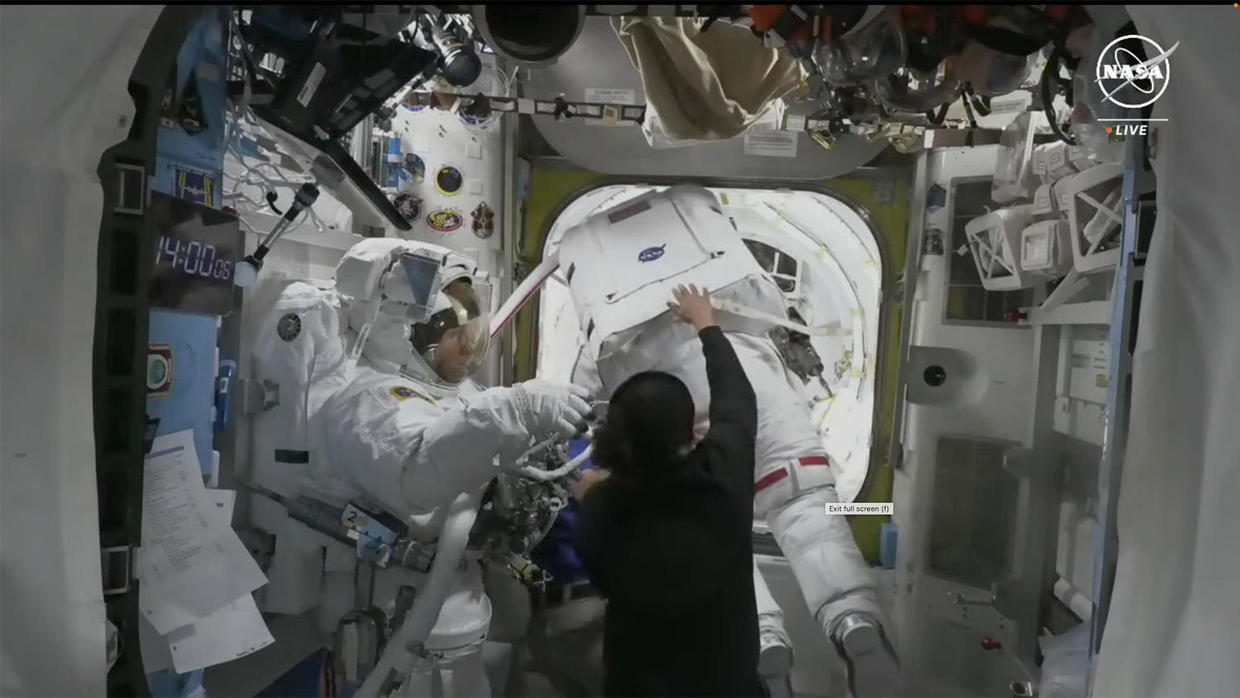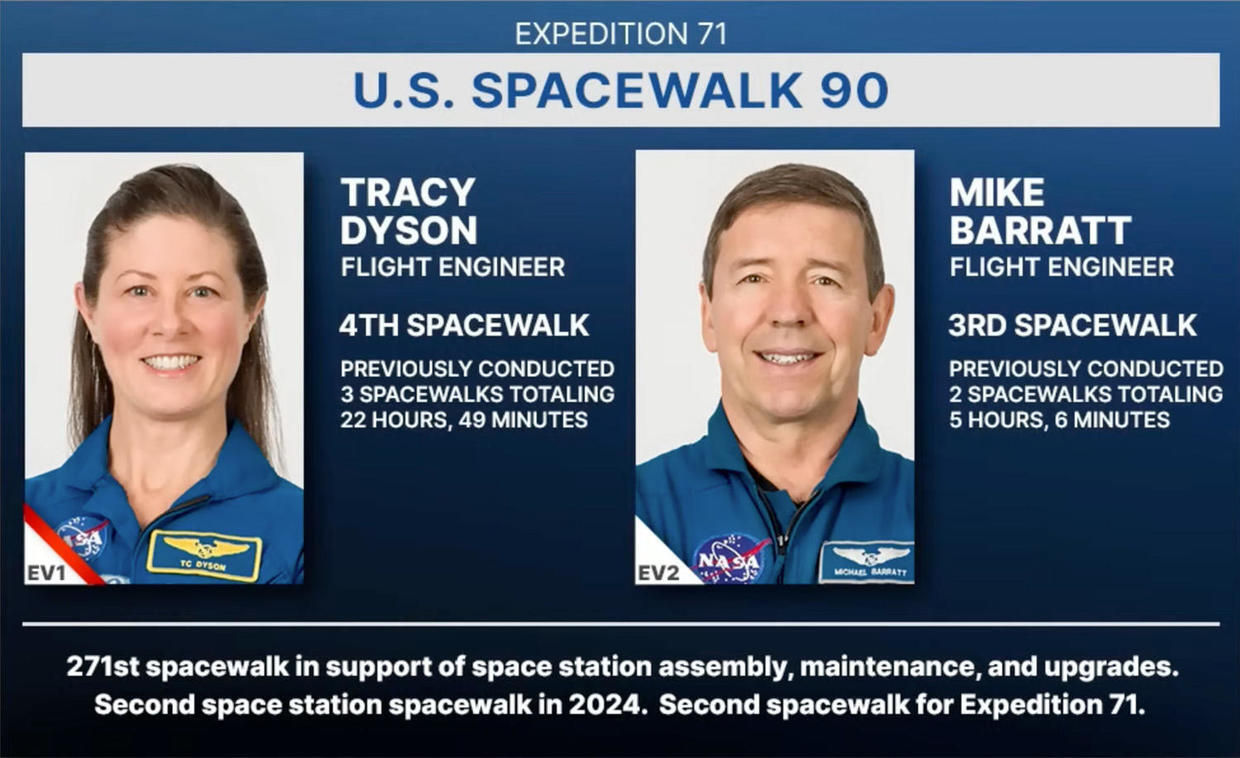26.06.2024
Floating in the International Space Station's Quest airlock module, veteran spacewalkers Tracy Dyson and Mike Barratt were preparing to head outside Monday to finish a spacewalk that was called off June 13 when Dyson reported a significant water leak from her spacesuit's cooling system, saying "there's literally water everywhere."
The leak was stopped when Dyson reconnected an umbilical that supplies station power, cooling water and oxygen. The airlock was repressurized, its inner hatch was opened and the astronautsmoved into the airlock's inner compartment where crewmates were standing by to help them out of their bulky spacesuits.
NASA said Dyson and Barratt were never in any danger.

Astronaut Tracy Dyson, wearing a spacesuit with red stripes, is helped back into the spacewalk staging compartment after a coolant leak prompted flight controllers to call off a planned 6.5-hour spacewalk. Crewmate Michael Barratt can be seen at left as both were assisted by station astronauts Jeanette Epps (in dark shirt) and Matthew Dominick (out of sight behind the others).
The leak started right after the crew switched their spacesuits to battery power at 8:46 a.m. EDT to officially begin the planned six-and-a-half-hour spacewalk. Moments after the switch to battery power, the cooling water in Dyson's suit began spraying out.
"Oh, my goodness," Dyson said when she noticed the water spewing out.
"Oh, wow," Barratt agreed.
"Water is flowing out of my SCU (service and cooling umbilical), guys," Dyson told flight controllers. The umbilical supplies cooling water, oxygen and electrical power until the crew member disconnects to exit the airlock.
"There's a lot of water flowing," Dyson said, a moment later adding, "there's literally water everywhere. ... I've got ice all over my helmet."
The umbilicals were reconfigured and the leakage stopped. After closing the airlock's outer hatch, the compartment was repressurized so the spacewalkers could make their way back into the station.
While they never floated outside, Dyson and Barratt were credited with a 31-minute spacewalk. That's the time between switching their spacesuits to internal batteries and reconnecting them to station power.
Barratt already held the record for the shortest spacewalk on record, 12 minutes in vacuum inside the Russian segment of the station in 2009 when he and cosmonaut Gennady Padalka installed a docking mechanism in place of a hatch.
That record still stands.
"And Mike, you already have the shortest EVA I know of, but this one doesn't count today. So your old record still holds," astronaut Steve Bowen radioed from mission control.
"Great," Barratt laughed. "To caveat that, it was the shortest complete — and successful — EVA on record."

Dyson and Barratt are veterans of five earlier spacewalks, including a 12-minute EVA by Barratt in 2009 that was carried out inside the Russian segment of the space station. That's the shortest spacewalk on record.
Dyson has now logged four spacewalks totaling 23 hours and 20 minutes while Barratt's total across three EVA stands at five hours and 37 minutes. Total station spacewalk time through 271 EVAs totals 1,715 hours and 56 minutes, or 71 days 11 hours 56 minutes.
It was the second spacewalk in a row to be called off before the astronauts could exit the airlock.
Dyson and astronaut Matthew Dominick originally planned to carry out the same excursion on June 13, but the spacewalk was called off after Dominick reported a suit "discomfort issue." No details were provided.
Dyson and Barratt were already penciled in for a second spacewalk, or EVA, and NASA managers decided to keep that same lineup for Monday's do-over.
The goals of the outing were to retrieve a malfunctioning radio transmitter and antenna package, known as the radio frequency group, or RFG, that defied two earlier attempts to unclamp it from a storage platform.
Dyson also planned to wipe down several targeted areas near the station's U.S. airlock and a few vents in a bid to collect samples of any micro-organisms that might have managed to survive in the extreme temperatures, radiation and vacuum of open space.
If researchers find any such organisms after the samples are returned to Earth it will help engineers devise ways to prevent similar earthly bio-contamination on Mars during future missions to the red planet.
Had the spacewalk gone well, NASA planned to stage another EVA on July 2. It's not yet known how the water leak issue might affect the spacewalk schedule or what will need to be done to correct the problem.
Quelle: CBS News
